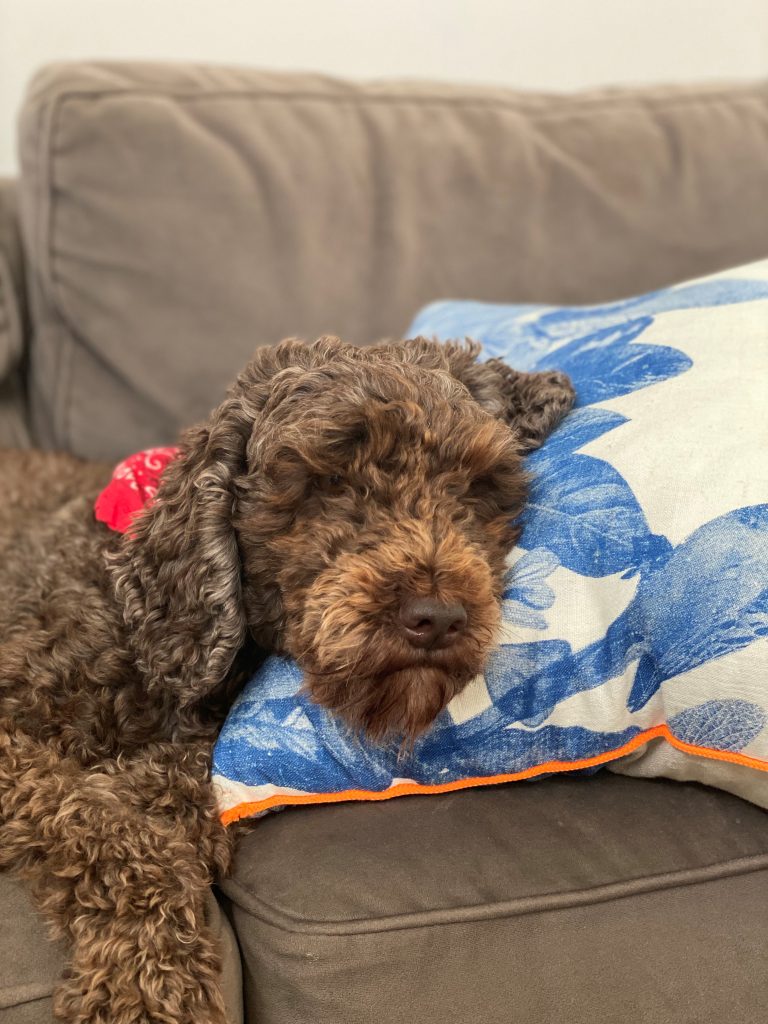Have you ever woken up in the middle of the night to find a 30-kg Labrador sprawled across your chest like a warm, drooling weighted blanket? Or maybe you’ve played the familiar game of “sleep Tetris” as your tiny Terrier somehow expands to take up 85% of the bed? You’re not alone. Where your dog sleeps at night says a lot about their sense of safety and also about your level of spinal flexibility.

The Natural Instinct: Pack Cuddles Forever
Let’s get one thing straight: dogs are not solitary sleepers by nature. In the wild (and in your lounge room), dogs are social animals who feel safest sleeping close to their pack. Physical contact during rest isn’t just cute, it’s instinctive. Sleeping in a pile provided warmth, security, and protection from predators. These days, the only predators are the ones stealing covers, but the urge to snuggle remains strong.
So when your dog curls up behind your knees, plonks their head on your pillow, or lies nose-to-tail with your toddler, they’re doing what evolution designed them to do: sleep near their family.
Everyone’s Needs Matter (Yes, Even the Humans)
Of course, not every human wants to share their bed with a furry, snoring furnace. Some of us need space. Or have allergies. Or draw the line at waking up with a squeaky toy in the ear canal. And that’s fair.
It’s completely okay to have boundaries. Your dog can sleep elsewhere and still feel safe and secure. The key is to provide a sleep space that’s cosy, quiet, and smells like home (bonus points for an old shirt that smells like you). Whether it’s your bed, their bed next to yours, or even a crate, what matters is consistency, comfort, and that they feel part of the family.
Why Good Sleep Matters (For Dogs AND Humans)
Just like us, dogs need good-quality sleep to function. They spend about 12–14 hours a day sleeping (puppies and seniour dogs can snooze even longer), and much of that is deep, restorative sleep, critical for:
- Memory consolidation: Dogs learn best when they’re well-rested. Those sit-stay-drop drills need overnight processing too.
- Emotional regulation: Tired dogs are crankier, more reactive, and less able to cope with stress. Sound familiar?
- Physical health: Sleep helps the immune system, supports growth and repair, and keeps your dog in top tail-wagging shape.
Poor sleep can lead to irritability, increased anxiety, and even behavioural issues. So if your dog’s tossing and turning, snoring loudly, or waking frequently (without stealing your spot), it might be time to reassess their sleep environment.
Final Thoughts (And a Gentle Nudge to the Side)
Where your dog sleeps at night should be a decision that works for everyone in the household. If you love a cuddle and your dog snoozes happily on your feet, go for it. If you need your space and your dog sleeps soundly in their bed with their stuffed duck, that’s great too.
Just remember: your dog wants to feel safe, secure, and connected to their family. So, whether it’s a king-size bed, a snuggly crate, or a plush corner cushion, give them a peaceful place to rest. And maybe just maybe claim your pillow back.
P.S. If your dog is struggling to settle at night, seems anxious when left alone, or snores like a freight train, a check-up with your vet or behavioural consultant might help. Sleep is serious business… even when it’s full of fur and funny positions.